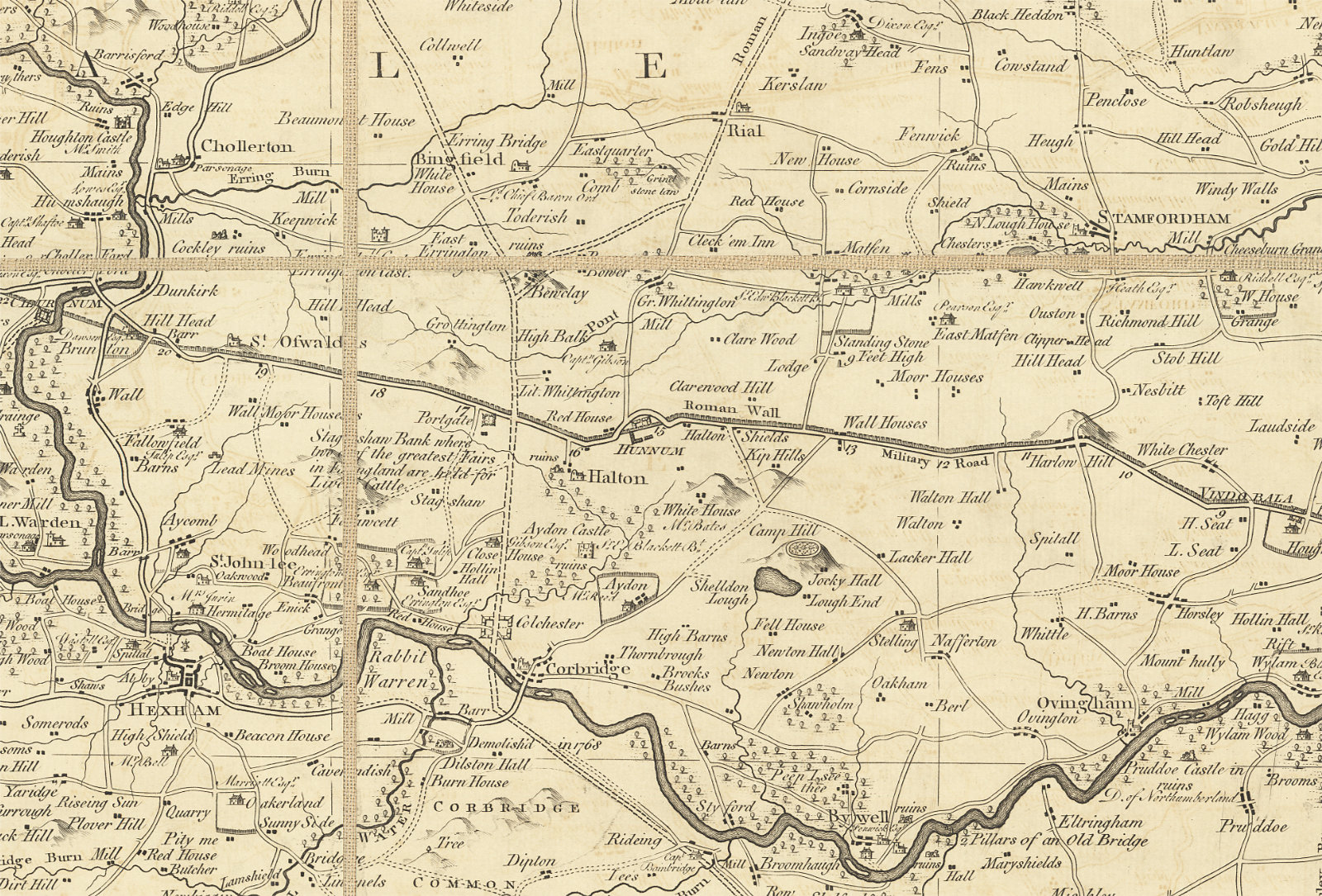History & Heritage
Rich in History
Matfen Estate is rich in history and includes Halton Castle, a 14th Century Pele Tower, whose gardens are opened to the public by Sir Hugh and Lady Blackett once a year to support the British Red Cross. Adjacent to the Castle is Halton Church, which is thought to be an Anglo-Saxon building, although indirect evidence links the site back to the 8th Century.

The Estate House
The Estate House can claim a dignity not shared by its grand neighbour, the hall. It was part-designed by the architect who is arguably the North-East’s finest – John Dobson.
The Ice House
An early 19th Century vaulted chamber, used to store ice throughout the year for use by the main house at Matfen before the days of refrigeration, and recently restored.
The Standing Stone
This prehistoric sandstone monolith is a Scheduled Ancient Monument, listed Grade II by Historic England. It stands 7ft high and has cup marks near its base on three sides.
Hunnum Roman Fort
Hunnum was a Roman fort north of the modern-day village of Halton. It was the fifth fort on Hadrian's Wall and is believed to have been built between 122 AD and 126 AD.
Pele Tower
Fenwick Tower was a 12th-century tower house at Fenwick, near Matfen. The house was the home of the Fenwick family from the 12th century until they moved to Wallington in the 16th century.
Halton Castle
Halton Castle is a pele tower close to Hadrian’s Wall, north of Corbridge. The Pele tower was first recorded in 1382, but a manor house was added to it in the 15th century.
A MAP OF THE COUNTY OF NORTHUMBERLAND
Armstrong, Andrew, Major, Kitchin, Thomas, 1718-1784
Creative Commons Attribution-NonCommercial 2.5 License
http://digitalarchive.mcmaster.ca/islandora/object/macrepo%3A79588
Roman and Bronze Age Remains
At Halton are also the remains of a Roman fort, Hunnum, one of 16 forts built along the length of the Roman Wall. Some 3 miles of Hadrian’s Wall and its coast-to-coast walking trail traverse the estate. Also on the Estate is Standing Stone Farm (the original Home Farm), where a Bronze Age Standing Stone can be found, also known as the Stob Stone.
THE ESTATE HOUSE
The Estate House can claim a dignity not shared by its grand neighbour, the hall. It was part-designed by arguably the North-East’s finest architect – John Dobson.
The Ice House
An early 19th Century vaulted chamber, used to store ice throughout the year for use by the main house at Matfen before the days of refrigeration, and recently restored.
The Standing Stone
This prehistoric sandstone monolith is a Scheduled Ancient Monument, listed Grade II by Historic England. It stands 7ft high and has cup marks near its base on three sides.
Hunnum Roman Fort
Hunnum was a Roman fort north of the modern-day village of Halton. It was the fifth fort on Hadrian’s Wall and is believed to have been built between 122 AD and 126 AD.
Pele Tower
A 12th-century tower house in Fenwick, near Matfen, and the home of the Fenwick family from the 12th century until they moved to Wallington in the 16th century.
Halton Castle
Matfen Estates Timeline
1660
William Blackett elected Sherrif of Newcastle, later becoming mayor.
1673
William Blackett elected to Parliament in 1673 and created a baronet by Charles II on 12 December 1673.
1675
William Blackett bought Anderon Place, Newcastle upon Tyne, which was known to be the largest house and grounds within a walled city in the country.
1680
Edward, eldest of 7 siblings, inherited the baronetcy and built Newby Hall in Yorkshire.
1828
The Estate House was part-designed by John Dobson, arguably the North-East’s finest architect, as a dower house to shelter relicts of the mighty Blackett dynasty, one branch of which has been at Matfen Hall for 250 years.
1832
Matfen Hall was completely rebuilt in 1832-6 on the site of an earlier Jacobean house by Sir Edward Blackett, the 6th baronet.
1995
Following a major programme of work the Hall was opened as a hotel in 1999 and operated by Sir Hugh Blackett (12th baronet) and his wife Anna before being sold as a hotel in 2020.
